To identify matelassé, start by examining the fabric's distinctive quilted texture, which features raised patterns that give it a three-dimensional look. It's lightweight, often made from cotton or blended materials, and has a soft feel. Look for intricate designs, ranging from geometric shapes to floral motifs. Unlike quilts, matelassé is a single-layer fabric, making it breathable and easy to layer. Check its maintenance instructions too—machine washable on a gentle cycle is typical. If you want to explore more details about matelassé's origin and uses, there's plenty more to discover ahead.
Understanding Matelassé Fabric
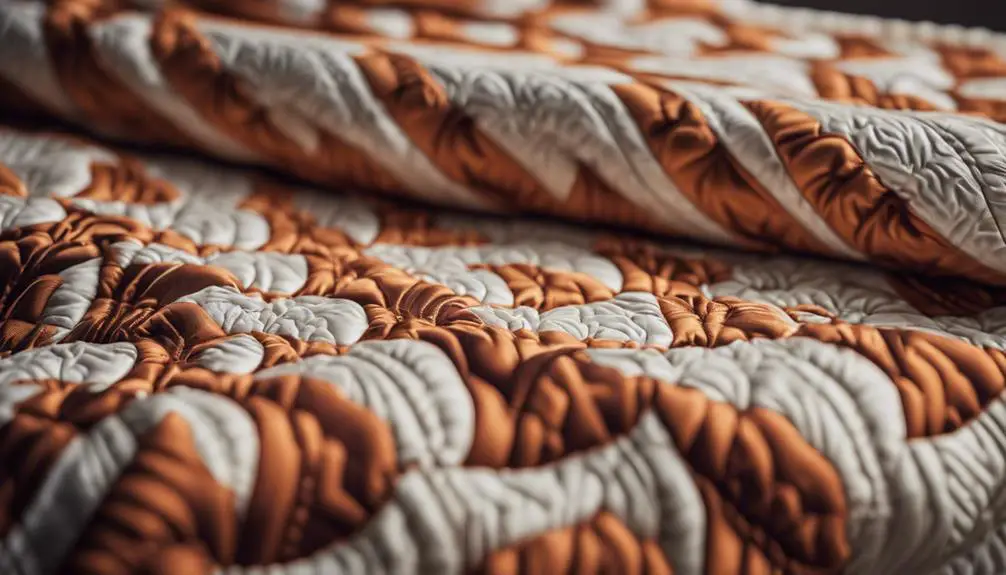
When you explore matelassé fabric, you'll quickly notice its distinctive textured look, which is achieved through a unique weaving technique that creates a quilted appearance without any stitching. This characteristic makes matelassé fabrics stand out, as they offer the elegance of a quilted design while remaining lightweight and versatile.
Typically composed of three to four sets of threads, matelassé includes thicker yarns that enhance its puffiness and depth. While cotton is the most common material, you'll find variations that incorporate silk, wool, or linen, each contributing to the fabric's luxurious feel. The intricate designs found in matelassé range from geometric shapes to floral patterns, making it suitable for a variety of decor styles.
One of the most appealing aspects of matelassé is its lightweight bedspread quality. Unlike traditional quilts, which can be bulky, matelassé is a single-layer fabric, allowing for easy layering in your bedding ensemble. This feature not only provides comfort but also adds a touch of sophistication to your space, making it a favorite choice for both bedding and upholstery.
Historical Background of Matelassé
Matelassé has a rich history that dates back to the 18th century in France, particularly in the bustling port city of Marseilles. Developed by Robert Elsden, this unique fabric aimed to replicate intricate quilted textiles without the need for stitching. The term "matelassé" itself originates from the French word for "quilted" or "padded," perfectly capturing the essence of this weaving technique.
Commercial production of matelassé took off in Britain during the 1760s, leading to its widespread popularity in home textiles and apparel. Initially favored for women's clothing amidst the Rococo movement, matelassé soon became a staple in bedding and home decor. The introduction of the Jacquard loom in 1801 revolutionized matelassé production, markedly enhancing efficiency and allowing artisans to create more complex patterns and designs.
As you explore the historical significance of matelassé, you'll appreciate how its development not only reflects the artistry of 18th-century France but also marks a pivotal point in textile manufacturing, paving the way for innovations that continue to influence fabric design today.
Key Characteristics of Matelassé
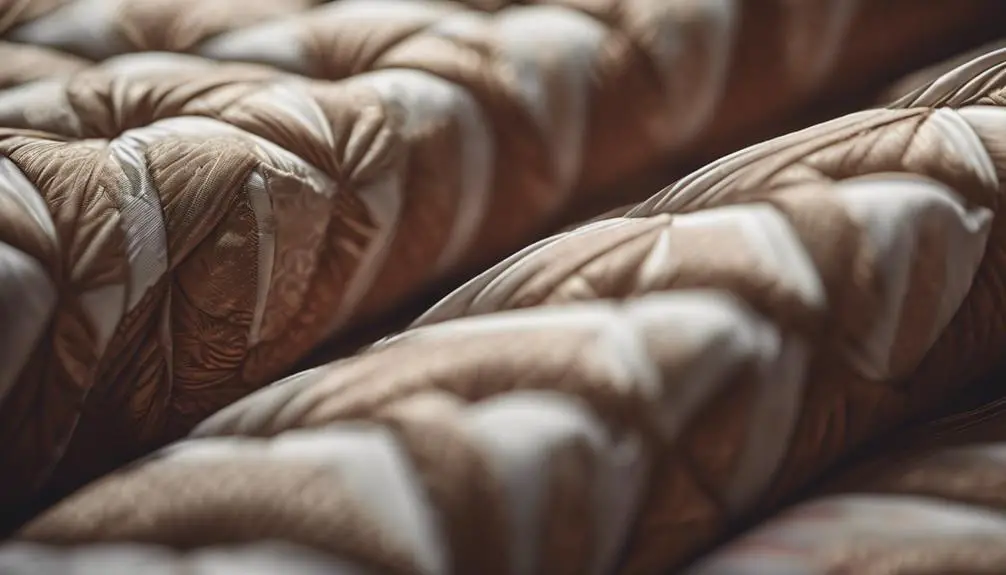
A distinctive feature of matelassé is its intricate raised patterns that create a quilted appearance, achieved through a specialized weaving technique rather than traditional stitching. As you explore this fabric, you'll notice its unique characteristics that set it apart from other textiles.
- Geometric shapes that catch the eye
- Elaborate floral patterns adding sophistication
- Three-dimensional texture resembling fine quilts
- Soft, puff yarns contributing to its lightweight feel
- Rich cotton, silk, or linen blends enhancing depth
Matelassé typically consists of 3-4 sets of threads, including thicker puff yarns, which gives it that remarkable texture. Its lightweight nature makes it less bulky than traditional quilts, allowing for easy layering in your home decor. You can use matelassé in decorative bedding items like coverlets, shams, and throws, providing both style and comfort. The fabric's variety of designs enhances its visual appeal, making it a perfect choice for elevating your living space. So, when looking for that sophisticated touch, remember the key characteristics of matelassé that define its beauty and functionality.
Matelassé Vs. Quilts
There's often confusion between matelassé and quilts, but understanding their key differences can help you choose the right option for your needs. Matelassé is a single-layer fabric that achieves a quilted appearance through its unique woven texture, while quilts consist of multiple fabric layers. A quilt typically includes a decorative top, an insulating middle, and a backing, all stitched together with quilting stitches for added warmth.
When it comes to coverage, matelassé coverlets usually reach only halfway down to the floor, making them lighter and less bulky than full quilts. The thinner matelassé fabric lacks the batting found in traditional quilts, resulting in a more breathable option that's ideal for layering, especially in warmer climates. In contrast, quilts provide more warmth due to their multi-layer construction and are often the better choice for colder environments.
The texture of matelassé is achieved through interlocking threads, giving it a distinctive raised pattern that differs from the stitched designs commonly found in quilts. By recognizing these differences, you can select the perfect bedding for your specific needs and preferences.
Applications of Matelassé
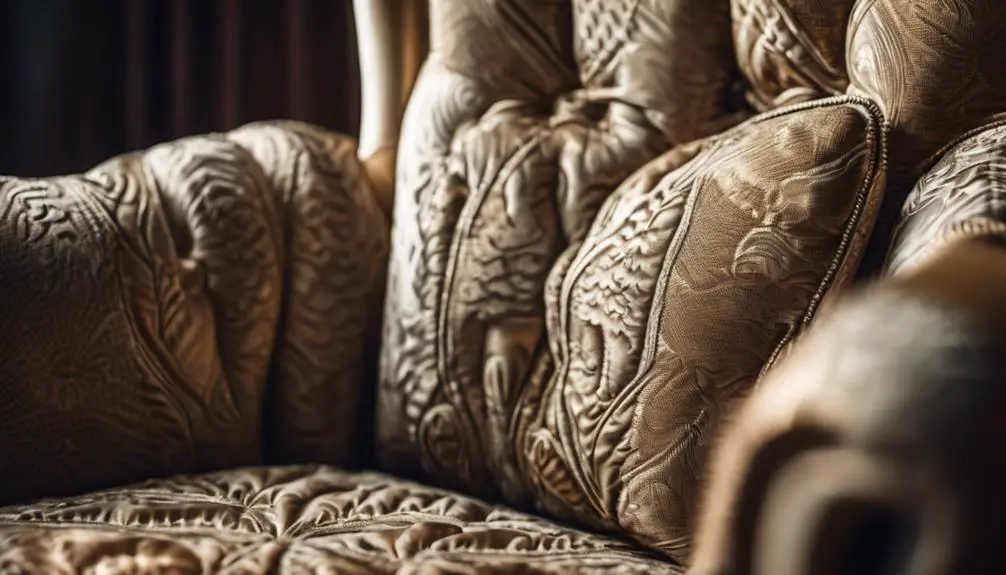
Many homeowners appreciate matelassé for its versatile applications in home decor. This textured fabric enhances the aesthetic appeal of various bedding products, making it a popular choice for those looking to elevate their space. From traditional to contemporary styles, matelassé complements a range of decor themes effortlessly.
You might consider incorporating matelassé in the following ways:
- Coverlets: These lightweight, decorative bed covers add a luxurious touch without the bulk of traditional quilts.
- Pillow Shams: Enhance the look of your pillows with the intricate patterns and raised textures of matelassé.
- Throws: Use a matelassé throw for a cozy yet stylish accent on sofas or chairs.
- Bed Skirts: Elevate your bedding ensemble with a tailored matelassé bed skirt that ties the look together.
- Blankets: Enjoy the breathable cotton fabric for comfortable year-round use, whether as a standalone piece or layered with other bedding.
The range of designs—from simple geometric shapes to elaborate floral patterns—makes matelassé an attractive addition to your home. With its comfort and style, you'll find matelassé a perfect fit for any room.
Care and Maintenance Tips
Caring for your matelassé fabric is vital to keep it looking its best and lasting longer. Start by machine-washing your matelassé items in cold water on a gentle cycle. This helps preserve the texture and shape while minimizing wear. When drying, opt for a tumble-dry on low heat; high temperatures can distort the fabric's structure and reduce its puffiness.
For those who want to extend the lifespan of their matelassé, consider line-drying. This method maintains the original quality and prevents shrinkage. Remember to avoid bleach and fabric softeners, as these can damage the fibers and diminish the fabric's appearance.
Regular maintenance is important, so frequently check for pilling or fraying. If you spot any issues, address them promptly to keep your matelassé looking fresh and intact. By following these care and maintenance tips, you can guarantee that your matelassé remains a beautiful addition to your home for years to come. Prioritizing proper care will not only enhance its aesthetic appeal but also provide lasting enjoyment from your matelassé fabric.
Pros of Using Matelassé

Matelassé fabric brings a unique blend of style and functionality to your bedroom decor. Its textured patterns, ranging from geometric shapes to intricate floral designs, add visual interest that enhances your space. Here are some pros of using matelassé:
- Lightweight layering: Perfect for adding comfort without bulk.
- Breathable properties: Keeps you cool in warmer months and cozy during cooler weather.
- Easy maintenance: Typically machine washable, ensuring durability and long-term use.
- Versatile aesthetics: Complements various decor styles, from traditional to contemporary.
- Artisanal look: Offers a sophisticated texture that elevates any bedroom.
When you choose matelassé, you're not just selecting a fabric; you're investing in comfort and style. Its lightweight nature makes it easy to layer, which is ideal for shifting between seasons. You'll appreciate how breathable it is, preventing overheating while still providing a cozy feel. Plus, with its easy maintenance and luxurious appearance, matelassé stands out as a practical yet elegant choice for any bedroom. Enjoy the blend of artistry and comfort that matelassé fabric brings to your home!
Cons of Matelassé
While matelassé offers a unique aesthetic, it comes with several drawbacks that may impact your decision. One significant issue is its single-layer construction, which may lack the warmth provided by traditional quilts, making it less suitable for colder climates. Additionally, some individuals find the puffy fabric uncomfortable against their skin, especially those who prefer smoother textures.
Moreover, the distinct quilted appearance of matelassé might clash with modern minimalist decor, leading to perceptions of it being too traditional. If you're on a budget, you should also note that higher-quality matelassé products can be quite pricey, putting a dent in your wallet compared to basic bedding options.
Lastly, the intricate designs can add a maintenance burden, requiring special care to keep them looking their best. Here's a quick overview:
| Drawback | Description | Impact on Use |
|---|---|---|
| Lack of Warmth | Single-layer construction | Less suitable for winter |
| Comfort Level | Puffy texture may be uncomfortable | Not ideal for smooth fabric lovers |
| Style Compatibility | May clash with modern aesthetics | Might not fit all decor styles |
| Maintenance Requirements | Intricate designs need special care | Adds to upkeep responsibilities |
Considering these factors can help you decide if matelassé is right for you.
Where to Buy Matelassé Products
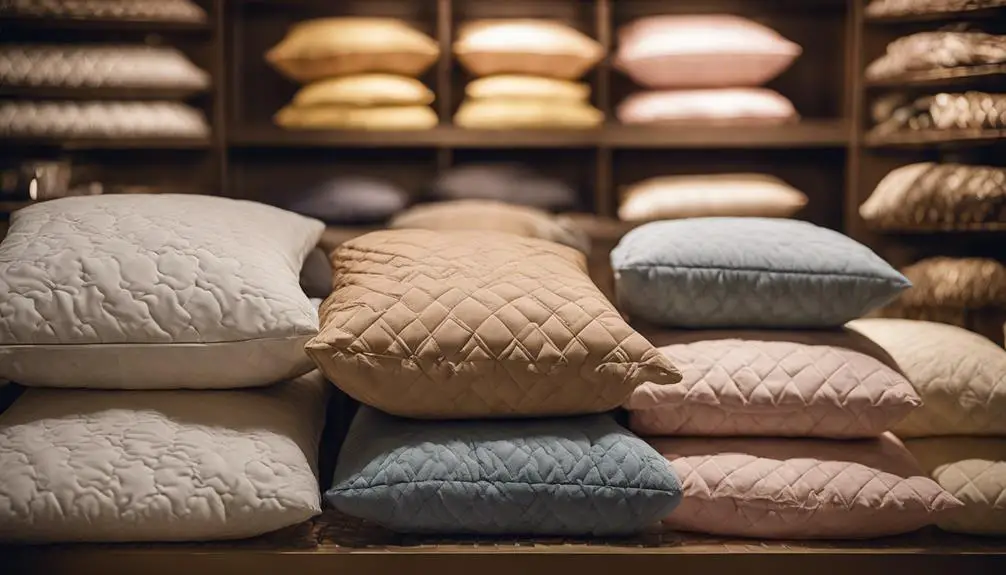
When you're ready to add matelassé products to your home, you'll find plenty of options across various retailers. Whether you prefer shopping in-store or online, there's something to suit every taste and budget.
- Soft, textured matelassé bedspreads in soothing pastels
- Elegant, patterned throw pillows that enhance your living space
- Luxurious matelassé quilts perfect for chilly nights
- Brightly colored table runners for a pop of personality
- Handmade or vintage matelassé items that tell a unique story
You can start your search at home goods stores like Bed Bath & Beyond, where you'll find affordable selections that fit your budget. If you're looking for variety, online retailers like Amazon and Wayfair offer an extensive range of matelassé brands, complete with customer reviews to help you choose wisely. For those seeking something upscale, designer showrooms may carry high-end matelassé products that feature premium quality. Finally, don't overlook e-commerce platforms like Etsy, where you can discover handmade or vintage options that promote sustainable practices while adding a touch of uniqueness to your home.
Frequently Asked Questions
What Are the Characteristics of Matelassé?
You'll notice matelassé's unique quilted texture, created by interlocking threads. Its lightweight, breathable fabric showcases intricate patterns and a raised effect, all while being made from a single layer, unlike traditional, bulkier quilts.
What Is the Difference Between a Quilt and a Matelassé?
When you compare a quilt to matelassé, you'll notice quilts have multiple layers for warmth, while matelassé features a single-layer, lighter design. Matelassé often adds texture without the bulk of traditional quilts.
What Is the Difference Between Jacquard and Matelassé?
Jacquard uses a special loom for intricate patterns, while matelassé features a quilted look created through yarn shrinkage. You'll notice matelassé's three-dimensional texture, setting it apart from flat Jacquard designs.
What Is Matelassé Texture?
Matelassé texture features a unique quilted appearance, giving your fabric a plush, three-dimensional effect. You'll notice its intricate patterns and breathable quality, making it perfect for stylish yet functional bedding and home decor.
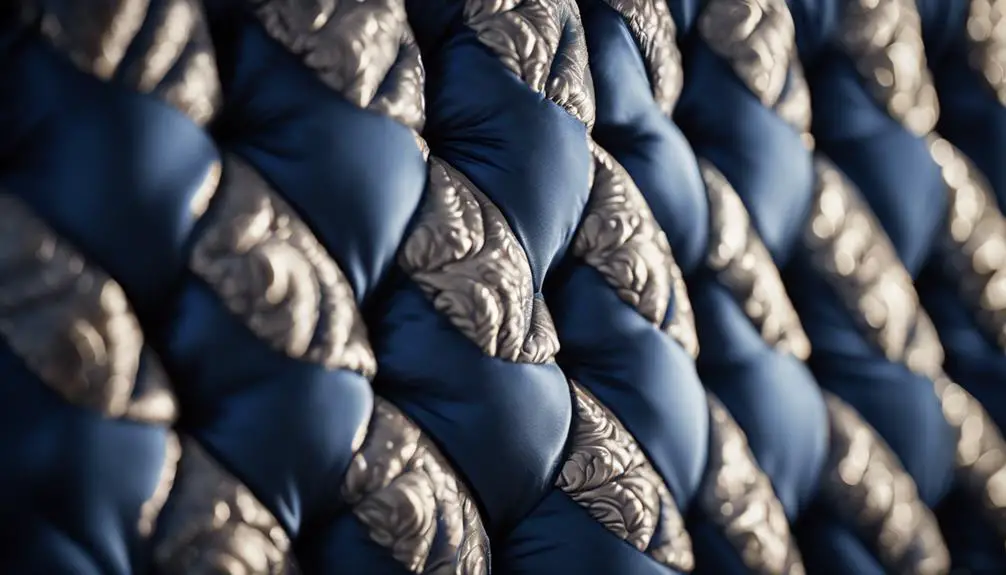



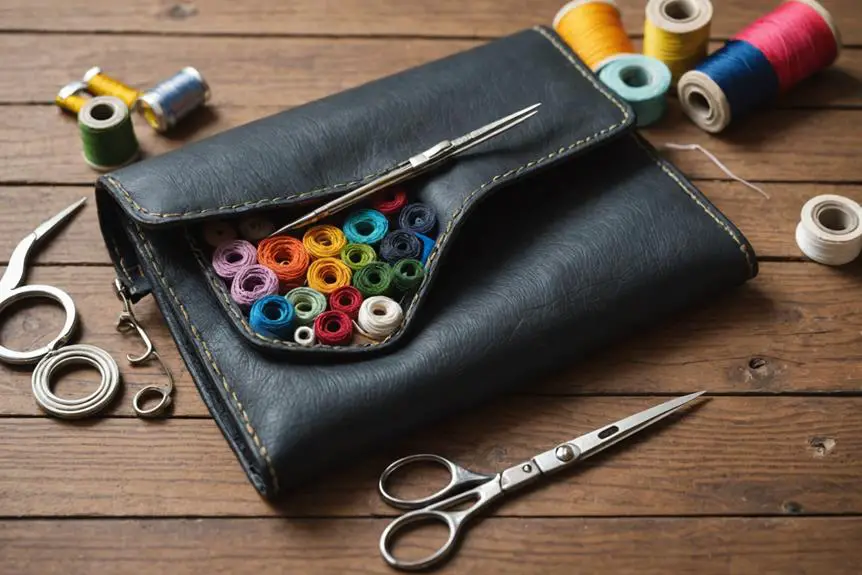
I don’t think the title of your article matches the content lol. Just kidding, mainly because I had some doubts after reading the article.